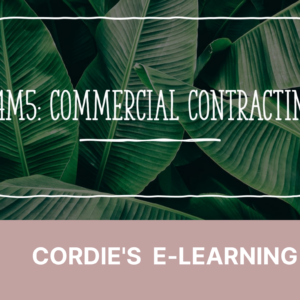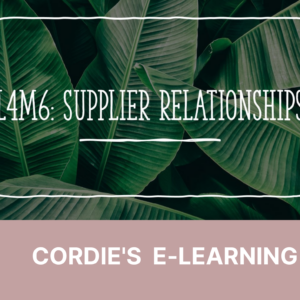L4M2 E-book
650.000 ₫
Mô tả
1.0 Understand how to devise a business case for requirements to be sourced from external suppliers
1.1 Analyse how business needs influence procurement decisions
- Type of purchase such as new purchase, modified re-buy, straight re-buy
- Implications of the business needs on the types of purchase
- Procurement’s role in developing a business case
1.2 Identify how costs and prices can be estimated for procurement activities
- Types of market data that can provide informationon costs and prices
- Direct and indirect costs
- Producing estimated costs and budgets
- Approaches to total costs of ownership/whole life cycle costing
1.3 Analyse the criteria that can be applied in the creation of a business case
- Examples of criteria typically applied in the production of a business case: costs, benefits,options, alignment with organisational needs andtimescales
- Benchmarking requirements
- The purpose of financial budgets
- Cost entries and timings of cash flows
- Performance and control of budgets
- Dealing with variances to budget
2.0 Understand market management in procurement and supply
2.1 Analyse the different types of markets utilised byprocurement and supply
Such as:
- Manufacturing
- Construction
- Retail
- Financial
- Agriculture
- Services
2.2 Compare the competitive forces that influence markets
- Bargaining strength of suppliers and buyers,
- Availability of substitutes and threat of entry
- Collate sources of information to estimate the breakdown of costs between direct and indirect costs for purchased goods and services
- Use information to prepare budgets or to negotiate prices
- Research market data and use to estimate and negotiate current and future prices and costs for purchased goods and services
3.0 Understand the use of specifications in procurement and supply
3.1 Analyse different types of specifications used inprocurement and supply and sources of informationthat can be used to create specifications
- Drawings, samples, branded, technical
- Conformance specifications
- Output or outcome, statement of work based specifications
- Standards
- The internet
- Suppliers
- Directories
3.2 Identify sections of specifications for through life contracts
- Scope
- Definition
- Description of requirement
- Testing and acceptance
- Change control mechanisms and remedies
- Social and environmental criteria
- Under or over specified need
- Monitor specification creation by colleagues and other internal stakeholders
- Implement standardisation
- Value analysis
- Value engineering
- Provide guidance to internal stakeholders onimplementation




